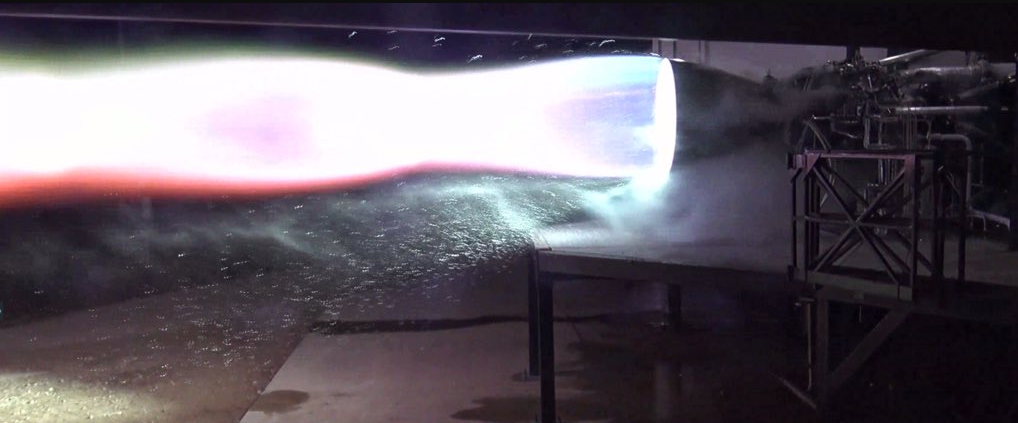SpaceX just test-fired the huge engine for its newest rocket

With a deep roar and a flash of light, SpaceX’s new and improved Raptor engine underwent its first test firing over the weekend. CEO Elon Musk tweeted out a series of videos that captured the engine fire creating a deafening noise.
The engine will be used by SpaceX for its Starship rocket (formerly known as the BFR, Big Falcon Rocket, and Interplanetary Transport System). The first test of the developmental Raptor engines occurred back in 2016, but this weekend’s test at the company’s site in Texas is the first of the flight-ready engines, which Musk called “radically redesigned.” They use methane and liquid oxygen to get their thrust, similar to Blue Origin’s most powerful engine, the BE-4.
The engines could get their first true test later this year, when SpaceX plans to attach three of the engines to the Starship rocket to “hop” around low altitudes. The final rocket is planned to have seven engines, while the booster it’s strapped to will have another 31.
The company’s goals for this rocket are big: Musk hopes it will make missions to the moon and Mars. Last year SpaceX announced it had its first paying moon passenger for the Starship rocket.
But the company has promised us moon tourists before. While they were never named, two people apparently paid deposits for trips to the moon aboard the Falcon Heavy rocket by the end of 2018. Those plans were scrapped in favor of waiting to put tourists aboard the Starship, so don’t hold your breath for an on-time departure this time around either.
Deep Dive
Space
How to safely watch and photograph the total solar eclipse
The solar eclipse this Monday, April 8, will be visible to millions. Here’s how to make the most of your experience.
How scientists are using quantum squeezing to push the limits of their sensors
Fuzziness may rule the quantum realm, but it can be manipulated to our advantage.
The great commercial takeover of low Earth orbit
Axiom Space and other companies are betting they can build private structures to replace the International Space Station.
Stay connected
Get the latest updates from
MIT Technology Review
Discover special offers, top stories, upcoming events, and more.